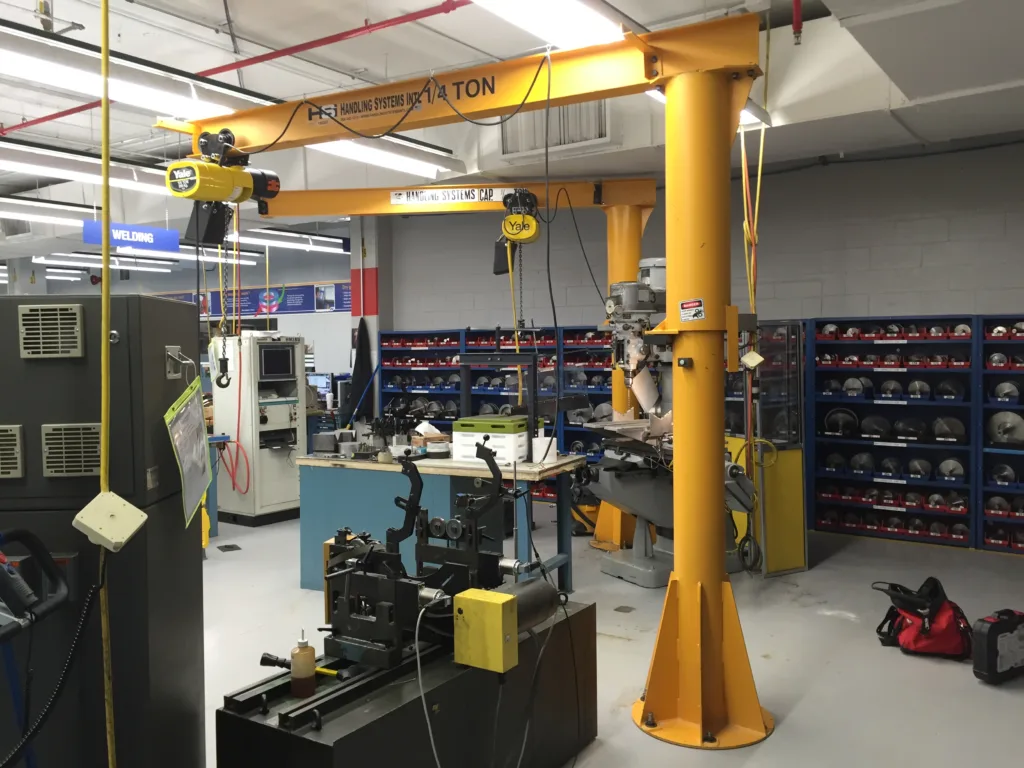When choosing the right freestanding jib crane for your operation, understanding the differences between models can make a significant impact on your workflow and efficiency. The 350 and 350F freestanding jib cranes, both engineered by Handling Systems International (HSI), are designed to meet specific needs with distinct features and capabilities.
Model 350 Freestanding Jib Crane
The Model 350 is a medium-duty jib crane ideal for applications requiring light assembly, welding, or instances where capacity and usage remain low. With the ability to rotate 360 degrees, it is versatile for a wide array of industrial applications. This model boasts a self-supporting design that mounts securely to the floor, requiring anchor bolts and a recommended foundation. With capacities up to 1 ton and standard spans/heights up to 14 feet, the design focuses on practicality and efficiency. It also offers custom heights and spans for specific project requirements.
Model 350F Freestanding Jib Crane
The Model 350F, on the other hand, introduces a unique element with its foundationless design, enhancing flexibility and ease of installation. It supports applications similar to the Model 350 but can go up to spans/heights of 20 feet, offering a more substantial operational reach. This feature particularly benefits environments with space constraints or those needing quick installation without concrete footers. The model maintains a maximum capacity of 1 ton but adds additional customization with options such as tight wire kits and electrical collectors for enhanced functionality.
Key Differentiators
- Foundation Requirement:
- Height and Span:
- Installation Flexibility:
This comparison reveals that while both cranes serve similar foundational purposes, the Model 350F stands out for those seeking flexibility and straightforward installation without the restrictions of traditional foundations. For operations where rapid deployment and adaptability are critical, the 350F offers a compelling advantage, making it an excellent choice for modern, evolving workspaces.

